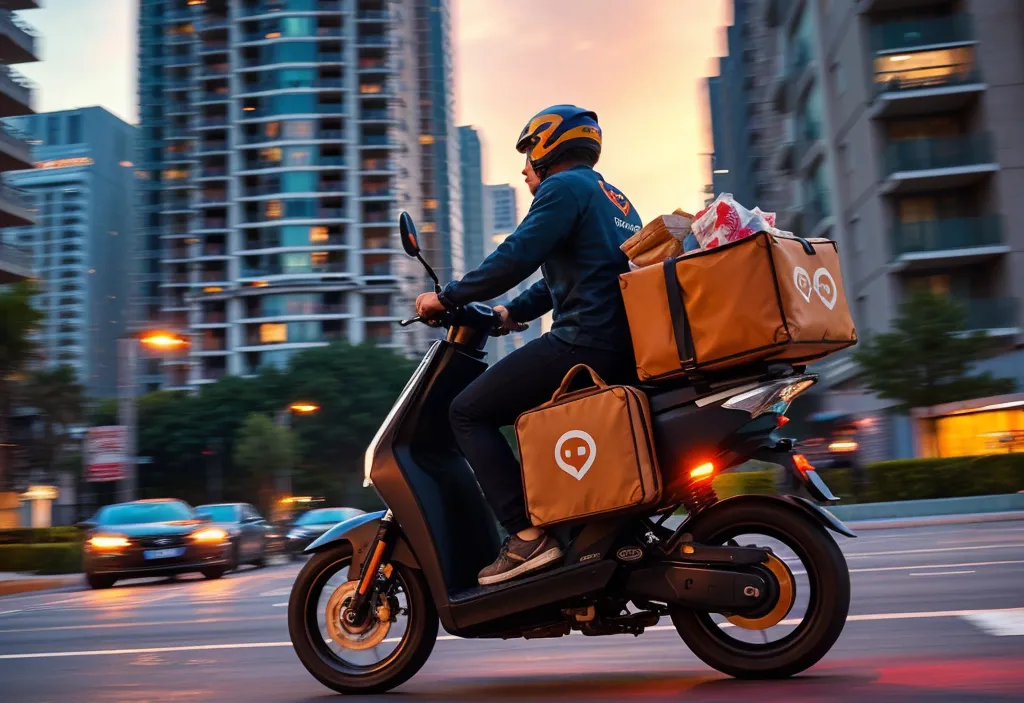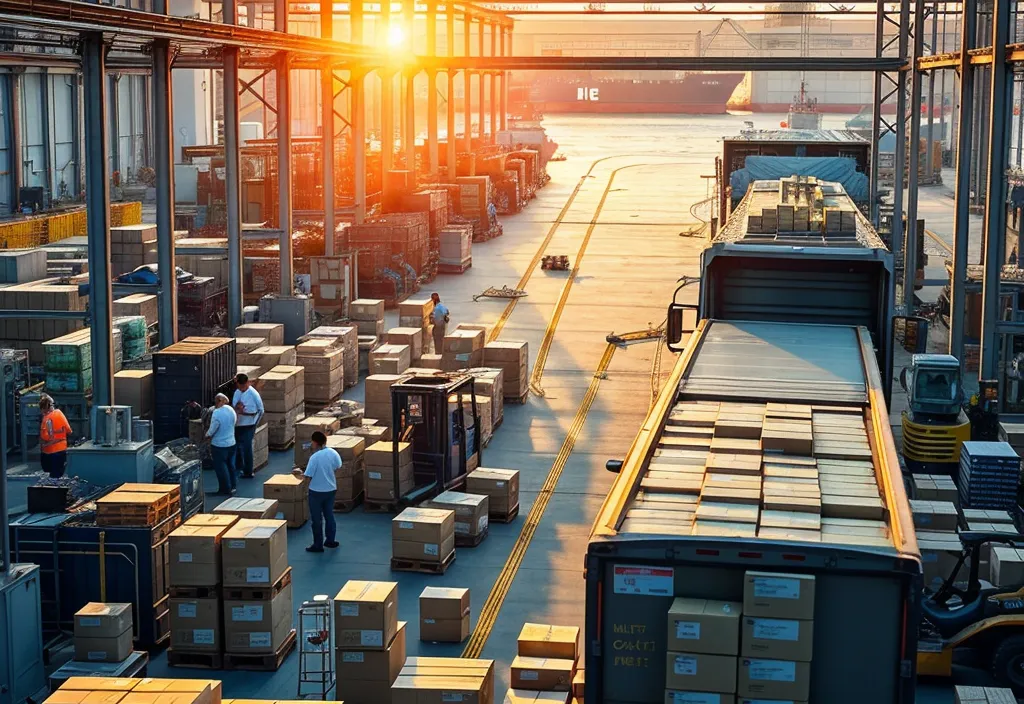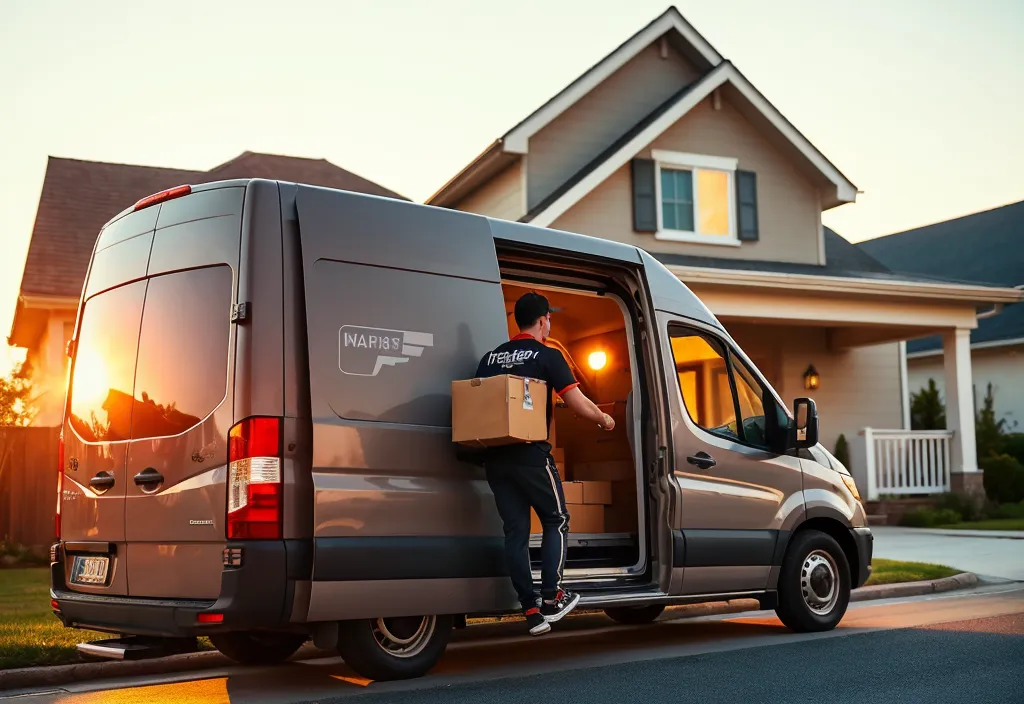Table of Contents
Regarding the last mile of the journey, the final phase of a product’s journey can make or break a business.
A product is delivered from a warehouse to the customer’s home at this important stage. This step is usually costly and takes the most time, but it is essential for keeping customers happy.
High shipping costs and the complexity of last-mile delivery make it a significant challenge for companies. the last mile of the journey is also where businesses can shine by providing a seamless shopping experience.
In today’s fast-paced world, same-day delivery has become essential for winning trust. The rise of online shopping has heightened expectations for speedy fulfillment, with a recent AlixPartners survey revealing that 25% of shoppers are more likely to buy from a retailer if they know their order will arrive within three and a half days.
To meet these demands, businesses are developing new technologies and experimental supply chain models to increase parcel volume and expedite deliveries.
This final-mile efficiency not only delights consumers by offering quicker purchases and increased convenience but also drives sales revenues as companies cater to urban and remote areas, enhancing their reach and boosting revenues.
Challenges in First-Mile Delivery

The first-mile delivery process involves an intricate web of activities that presents unique challenges for companies.
A granular look at these difficulties helps identify critical strategic planning and improvement areas. One major challenge is supplier reliability, where the dependence on multiple suppliers with varying levels of consistency can lead to unpredictability.
This variability affects production planning and inventory management, ultimately impacting the overall efficiency of the supply chain.
Another significant hurdle is the coordination required to synchronize schedules between suppliers, freight forwarders, and warehouse teams. Even a few-minute pickup delay can create a domino effect, leading to subsequent delays across the supply chain.
Inventory management poses challenges, such as accurately forecasting demand and managing stock levels to prevent stockouts or overstock situations. Additionally, regulatory compliance is critical, with many regulations, including safety standards and environmental compliance, to be adhered to.
This is particularly challenging in cross-border transactions, where regulations multiply, and meticulous documentation is required at every step of The Last Mile The Journey.
First-Mile Delivery
First-mile delivery, a term coined by the logistics industry, refers to the beginning of the supply chain process. This initial stage starts when an order is placed and involves collecting goods from the manufacturer or supplier.
During this phase, quality checks, packaging, and paperwork are completed before the goods are transported to a warehouse or distribution center. This may even include preparation for loading onto a cargo ship for international shipping.
The first mile is a critical part of the logistics chain as it sets the pace for The Last Mile The Journey. Any delay, error, or miscommunication at this stage can disrupt the rest of the chain.
This complex operation involves coordinating multiple stakeholders, including suppliers, freight forwarders, customs agents, and warehouse managers. Careful planning, reliable coordination, and robust technological support are essential to ensure a smooth and timely execution of The Last Mile The Journey.
What is last-mile delivery?

The Last Mile The Journey refers to the final phase in the delivery process, where a product is transported from a distribution center or warehouse to the customer step of the product, and it’s considered the most critical because it directly impacts customers.
Despite being the shortest distance in the entire supply chain, last-mile delivery is usually the most expensive and time-consuming part of the shipping process as a whole, The Last Mile The Journey.
The complexity of last-mile delivery comes from the need to manage multiple touchpoints, including traffic, route optimization, and the accuracy of the customer’s address.
These challenges make it a significant focus for businesses aiming to improve their logistics operations. Efficient last-mile delivery is essential for ensuring customer satisfaction, and it’s when the item’s product finally reaches the consumer, concluding the final phase of its journey.
Benefits of an Effective The Last Mile The Journey
An effective last-mile delivery strategy offers numerous benefits, including faster delivery and increased consumer convenience. Businesses can delight consumers with the desired convenience by delivering purchases quicker and directly to the door rather than requiring a trip to the store or a designated pickup point.
Businesses that offer prompt and dependable delivery services are more likely to attract and keep customers, which enhances the customer experience and boosts sales and profitability.
Furthermore, a robust The Last Mile The Journey strategy allows businesses to extend their services to remote and rural areas, increasing sales revenues due to greater access to new clients.
Additionally, by improving efficiency, companies can streamline operations and reduce the time and resources required for delivery. Retailers may reduce administrative work and physical labor by using automation and digital technology, improving delivery operations’ efficiency and saving costs.
Also Read: Explore Kauai Your Way: A Personalized Driving Itinerary
Quick Commerce
Quick commerce refers to a new wave of startups focusing on ultrafast deliveries. These startups often cater to consumers with a smaller assortment of goods that can be delivered in minutes.
This approach gained significant traction during the pandemic, showing positive results as consumers increasingly value speed and convenience. However, as the initial surge in demand has slowed, the standalone model of quick commerce has begun to face sustainability issues.
The Last Mile The Journey To address these challenges, many quick commerce platforms are now seeking to integrate with larger, established delivery platforms and retail chains.
This strategic shift may see quick commerce move behind the scenes, becoming part of a more extensive network of delivery options. As EMARKETER senior analyst Blake Droesch noted, the future of quick commerce will likely involve deeper integration into the broader landscape of The Last Mile The Journey services.
What is the Last-Mile Problem

The Last Mile The Journey problem refers to the challenges faced during the final stretch of the package, which en experiences extended waiting periods due to numerous stops and delays. In rural areas, deliveries are slowed by long distances, and fewer packages are delivered at each stop. Conversely, in urban areas, traffic congestion significantly contributes to delays.
This problem is exacerbated by high shipping costs and inefficiencies in the delivery process, which have become more pronounced with the ongoing surge in e-commerce sales.
More packages are delivered daily in the U.S., leading to higher customer expectations for fast and free delivery services. This rising demand places additional pressure on delivery services, making the last-mile problem a critical challenge for the logistics industry.
There’s a Focus on Logistics.
The Last Mile The Journey, Logistics is becoming increasingly prominent in today’s quickly evolving business landscape as companies recognize its critical role in customer satisfaction and operational efficiency.
The growth of online shopping and the demand for faster, more reliable deliveries have made logistics a top concern for businesses. The Last Mile, the final step of delivery, is now a crucial focus that impacts both customers and companies.
The company invests in new technologies and logistics to solve delivery issues and meet customer needs better.
This shift enhances the efficiency of delivery processes and opens up new opportunities for companies to differentiate themselves in a highly competitive market. As logistics evolves, its importance in driving business success will only become more pronounced.
Closing Thoughts
The Last Mile The Journey is a crucial aspect of the logistics process that can make or break customers. As eComeCommbreak customers’ retinues grow, so does the importance of addressing the challenges associated with the last-mile problem.
Businesses must innovate and adapt their strategies to meet the rising demands for quick, reliable deliveries, ensure customer satisfaction, and maintain a competitive edge. The future of logistics lies in the ability to streamline the final stretch of delivery, turning potential obstacles into opportunities for success.
FAQs:
What is the last mile of the journey?
The last mile of the journey refers to the final stage of the delivery process, where a package is transported from a local distribution center to the customer’s doorstep.
Why is the last mile important?
The last mile is crucial because it directly affects customer satisfaction, delivery speed, and overall business efficiency.
What challenges are associated with the last mile?
Challenges include traffic congestion in urban areas, long distances in rural areas, high delivery costs, and inefficiencies that can delay deliveries.

